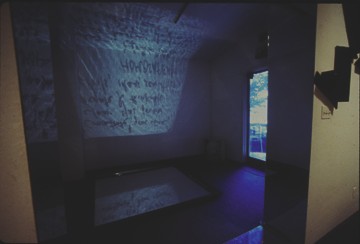

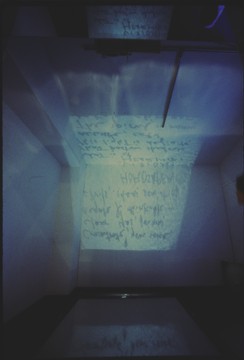
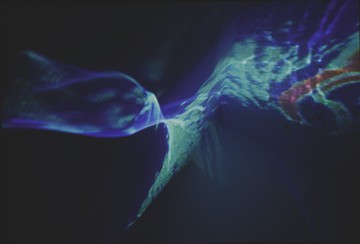
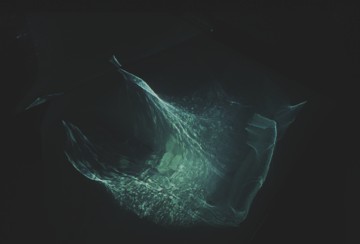
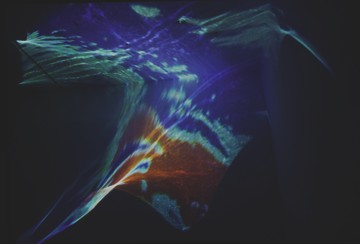
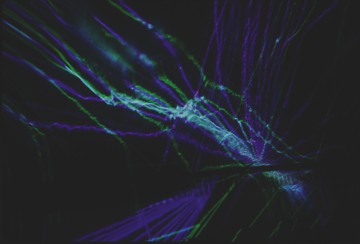
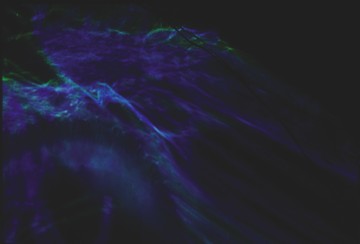
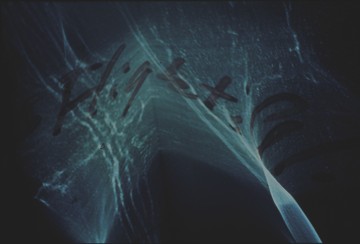
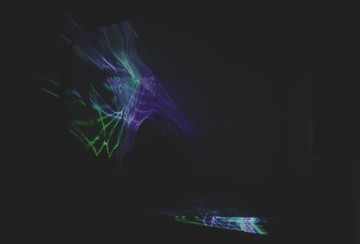
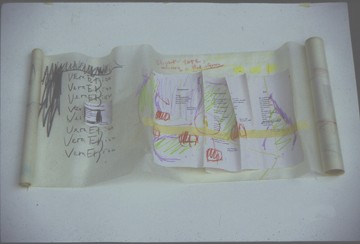
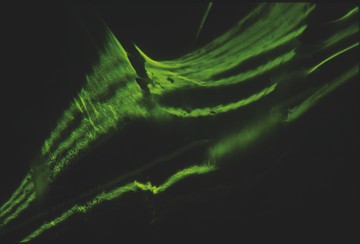
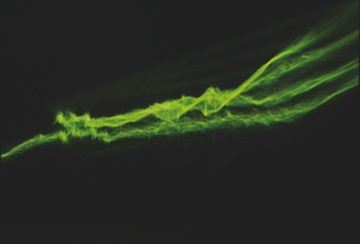
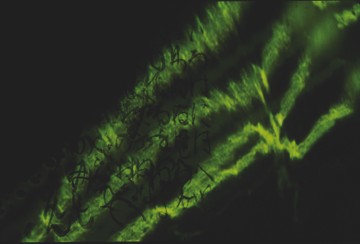
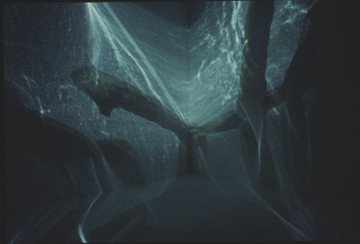
TOPOS #8 (1982), Dear Mr. KUKAI (1993), and Anatomy of December (1993) are a few of my installation works shown here in this cluster. It is about making a place of light: an artificial, a fictional enclosure that physically situates - a sort of self-theater: a walk-in-film. With in it, a drama: a subjective time-space sentience - the homosapien perceptive holdings of the uncanny( which resides in us, side by side in our everyday activities) -probed, profiled, projected.
Light is a principle feature.
It prepares, with its existing and/or made thresholds,multi-layered patterns
of light in motion (created by light encountering through the mediators -
absorbing gravity).
Keiko was born and educated in Tokyo, Japan. She was invited to join CAVS, MIT in1971 to work on the “Charles River Project”-revitalization of the then deteriorated river environ as a public open space. She conceived Water-Maze, Wind-Belt, Weightless-Tunnel - (culminating in The Shelter: sun-water dial), these all were generated and transfigured with natural forces, and each had formed as a component of the environ as a sustainable cyclical entity. This attitude/attribute, pursuing our aesthetic connection with various states of natural forces to create an urban open place that find humane communication, was carried to Harbor THEATER (1973-74) –a symphonic notation composed with five environmental situations: Sun-Theater, Air-Pool, High-Noon, TIDOPTICA, Wind-Wire. This concept was later incorporated into the “themes to guide” as a basis for “The Master Plan Boston Harbor Islands State Park”, published in 1984 by The Department of Environmental Management. From 1984 to 1987, Keiko was a consultant on numerous urban design projects in Japan (Tennosu Island, M.M. 21. K.I.T.)
In 1989 to 1990, she was asked to consult with the Central Artery/Tunnel Project to develop conceptual mitigation plan/design for the impact of the highway structure in Central Artery North Area (CANA) of Boston. This open space was best understood as a gateway-garden, symphonic in character and in scale. This resulted in PORTAL NORTH with four environmental /sculptural situations – CANA-Accoeded, GarlandCANA , Miller’s River’s Mirrors, CANATheater, each contributing to liberate the area from the overcastting structural impact, and to introduce and distribute the natural light to the proportionately large shadowed area underneath.
The following research has been conducted simultaneously with other visual projects and has been presented in teaching and lectures at M.I.T., Harvard and Radcliffe College since 1974. The principle topic has been the role of art in contemporary urban situations, in particular, its perceptual function in created human environments. Two examples are:
On Desert, On Camellia: A cross cultural study of the universal elements of visual perception and of how these elements are activated in the creative process under varying geographic and climatological conditions.
Anatomy Of Urban Myth: Quest for a subjective (qualitative) time-space experience in urban setting and how that cultures sustainable force to create a dynamic system environ: self-generative communication place to connect nature and urban living.
Images, words intersect and permeate into this textured light in motion. They appear, stand, lean, stretch, withhold, vanish, reappear, (every phenomena of assemblage has a possibility of disassembling. In TOPOSes, light in motion becomes a medium, disassembles shadows).
Light, there, becomes air: -non-static, illuminated air-mass pulsating and
populate space
(is infinity an idea)?
“---and how such instances, in any time past, so happens, vibrant,
to contain one in the immediacy.
And this immediacy have no frame. No distinction of directory
“-- eye sees, catalyzes the visible and invisible, reaches into the plain that we sense innately. No longer at that vastness, can we ask of form, nor of time. Things – in their every states, as independent as they can be- are connect, resist, vibrate, permit never of all measurements, present -
Our glimpse of that continuum
dares. Pulls us, To work. To layer the traces, A place we unknowingly know
of our re-entry to the formless. Possibly--through the means that art holds.
And our long past has shown that.
Our drifts of “I” –boundary. Every
happened presences –
of continuum, a possible
roar
Excerpt from my 1978 manifest TOPOS
Keiko Prince
Center for Advanced Visual Studies, MIT
N52-390, 265 Massachusetts Ave.
Cambridge, MA 02139
Keiko@mit.edu
Ph. 617.367.3797
FAX: 617.253.1660